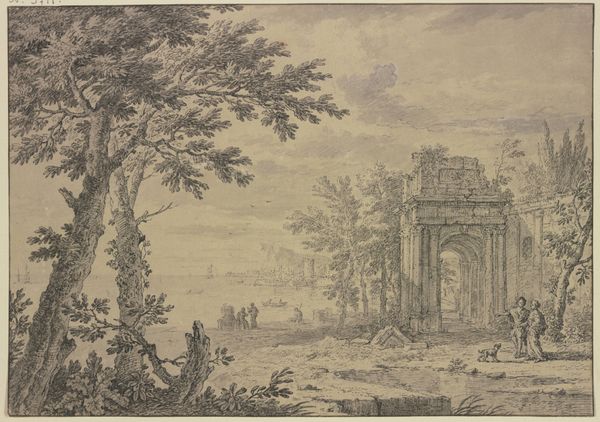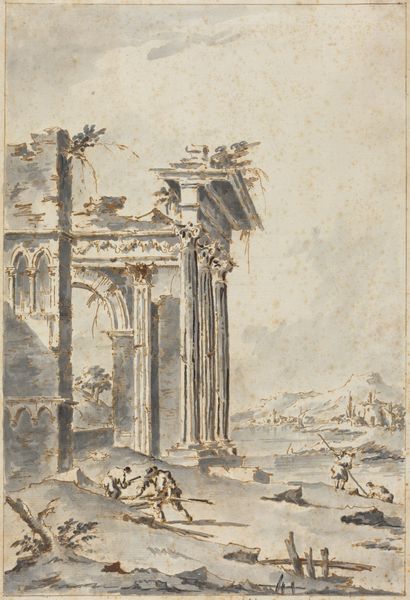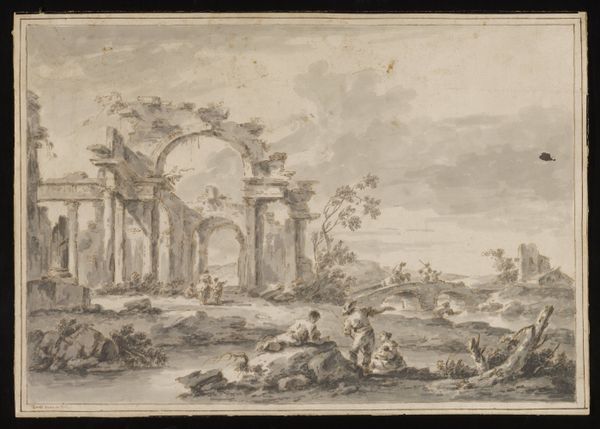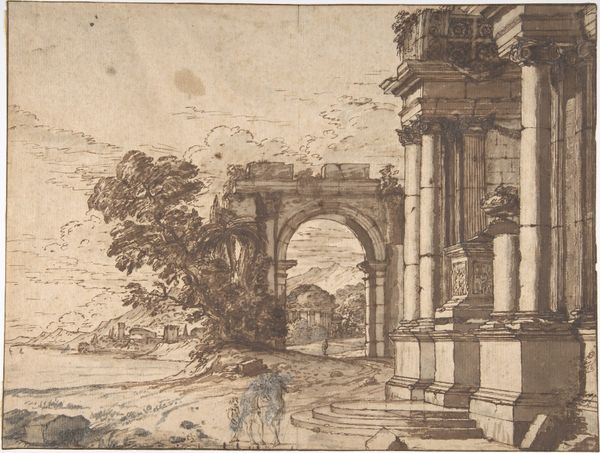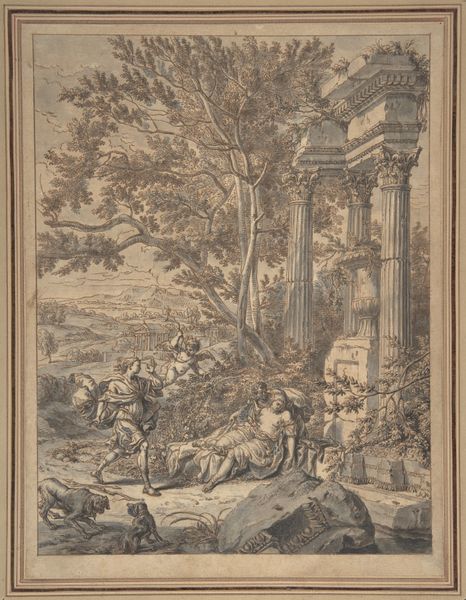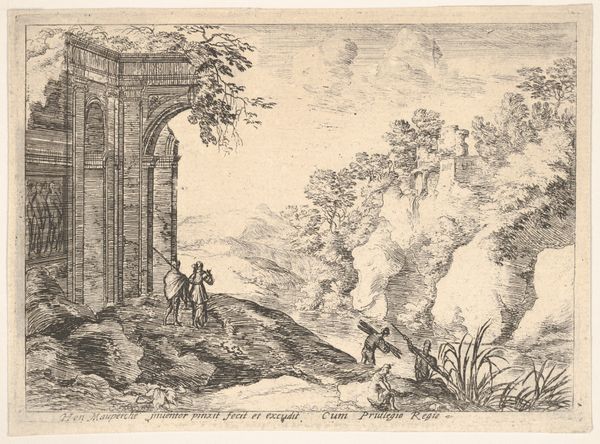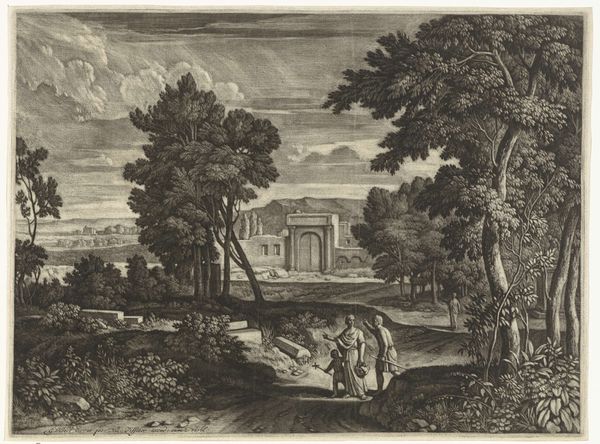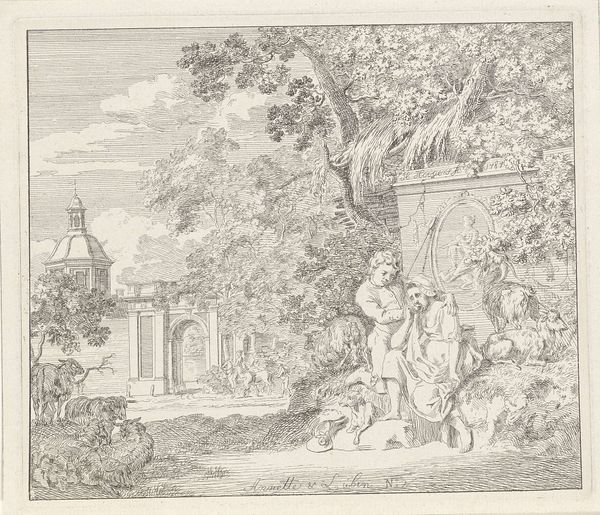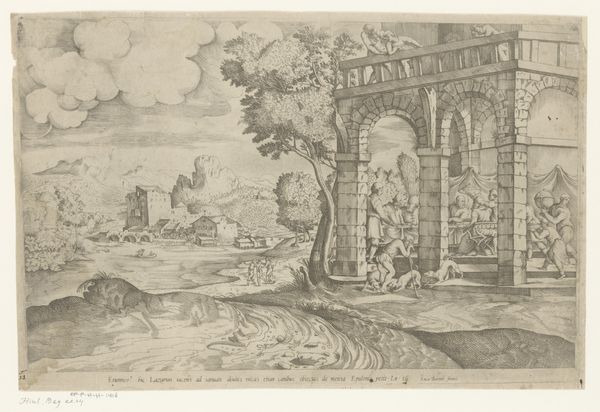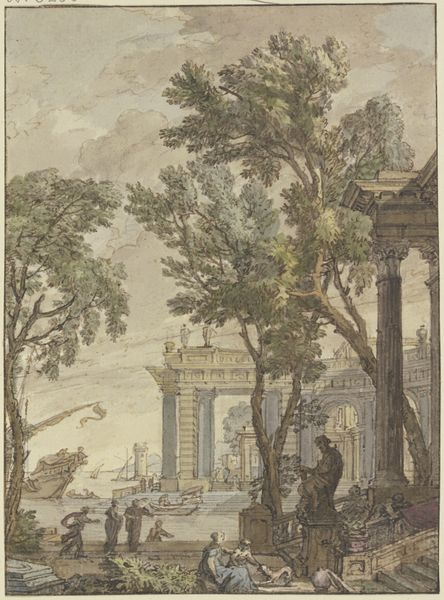
drawing, paper, ink
#
drawing
#
baroque
#
landscape
#
paper
#
ink
#
ancient-mediterranean
#
history-painting
Dimensions: overall: 25.7 x 39 cm (10 1/8 x 15 3/8 in.)
Copyright: National Gallery of Art: CC0 1.0
Editor: So, here we have Johann Oswald Harms' "Landscape with a Draftsman among Ancient Ruins," done around the 1670s in ink on paper. I’m immediately struck by the contrast between the detailed ruins and the sketchier background. What story do you think this piece is trying to tell? Curator: That contrast is key. We're seeing not just a landscape, but a commentary on time, power, and the act of representation itself. The draftsman becomes a stand-in for us, the viewers, engaging with the ruins of a past civilization. How do you see that past civilization being presented? As glorious, tragic, or something else? Editor: I guess a bit of both? There’s a grandeur to the architecture, but it's clearly crumbling. There is the implication that nothing lasts forever. Curator: Exactly! Consider the Baroque period. There's often a tension between opulent display and an awareness of mortality. Harms, through his depiction of decaying grandeur, subtly critiques power structures. By centering the "artist," he posits art as a form of cultural inquiry but it doesn't resolve what came before it. Where do we place art making in the ruins, as opposed to our present, our power, and those who came before us. Editor: That makes me think about the act of drawing ruins – almost like documenting a decline, or preserving something that’s disappearing. Is he making a statement about cultural memory? Curator: Precisely! Cultural memory is actively created and maintained, not passively received. He presents ruins to allow a reflection of the here and now in society, a new, conscious construction in response to them. Editor: I see. This is so much more complex than just a pretty landscape. It prompts me to think about our own relationship to history and the legacies we leave behind. Curator: Absolutely, art has the power to speak to these universal human concerns through cultural materials. Now I'm questioning how I engage the landscape in ways that support social causes.
Comments
No comments
Be the first to comment and join the conversation on the ultimate creative platform.
